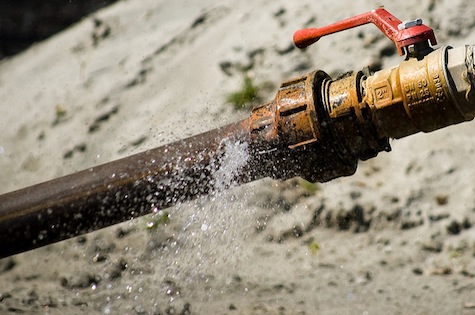Beating Water Loss with Technology
Trying to reduce water loss can feel like a lost cause if you don’t know where to start or where your efforts and investments will have the biggest impact.
Smart metering creates transparency in your distribution network to help you localize different types of Non-Revenue Water and adapt a more proactive approach to fighting your water loss.
Increasing levels of Non-Revenue Water (NRW) and water loss are among the many challenges facing the water industry and consumers today due to increased urbanization, higher demand and aging infrastructure. Combined with the effects of climate change seen in recent years, such as droughts and floods, this development calls for a more responsible use of this valuable resource. And while preserving our natural resources is everyone’s responsibility, as a water professional, this is literally your business.
In addition to the loss of revenue from distributing water that isn’t billed, the consequences of a high level of NRW include higher operational costs. Leaks necessitate expensive repairs of the infrastructure and could potentially result in a need to expand the network capacity. As the energy used to pump out NRW is pure waste this also causes a significant financial strain. Metering in itself does not solve the problem of NRW, but you can’t optimize what you don’t measure. With smart metering utilities get detailed knowledge about their distribution network. This provides the basis for making informed decisions about the most efficient way you can work proactively with water loss.
The Complexity of Non-Revenue Water
NRW is many things. From a hidden leak inside the home of one of your customers, or unmetered water use in a residence or at a construction site, to an illegal connection at the main. It could also be metering inaccuracies caused by aging mechanical meters or human errors in the meter reading process. Different types of water loss must be addressed in different ways. Case in point: if the majority of water loss in one of your districts comes from unmetered water use, upgrading distribution lines will not solve the problem. Today, limited knowledge of what goes on in the distribution network means that water utilities often base their efforts on a combination of theoretic models, guesses or trial and error. But reducing NRW and water loss becomes much easier and more efficient when you have the right information available at the right time – to the benefit of the environment, the consumers and your bottom line.
Data Creates Transparency
With smart metering, you can distinguish between real losses (leaks) and apparent losses (metering inaccuracies and unmetered consumption) per district in your supply area. This allows you to easily isolate where the unmetered water use is occurring, for example, residential and commercial sites, so you can spend your resources tackling the water loss that is preventable. Smart metering is a constant source of valuable information about the state of your network that makes it possible for you to act accordingly. Let’s look at three areas where smart metering helps you reduce NRW.
Lifetime Pinpoint Accuracy
At the core of smart metering is the meter itself. Unlike mechanical meters, an ultrasonic meter has no moving parts. This means that it is unaffected by wear and tear and maintains precision throughout its entire lifetime. In addition to ensuring fair and accurate billing, this also enhances the quality of your data. A mechanical meter has a higher start flow than an ultrasonic meter. Therefore, more water is consumed, but not billed. The accuracy and low start flow of ultrasonic smart meters on the other hand limit the amount of water consumption that is not measured and not billed. High accuracy – even at low flows – is crucial to water conservation and revenue protection, because it ensures that every single drop is accounted for.
Reliable meter reading
In addition to being very time-consuming, manual meter reading is costly and error-prone, which impairs the foundation on which you base your decisions. Smart water meters include remote reading capabilities that allow you to significantly reduce both the time and costs related to meter reading. You can eliminate re-reads, time-consuming follow-ups and estimated billing. As you are able to get data more often, you can also increase the interval of your water balance from yearly to monthly or even daily with automatic meter reading. This lets you discover issues within your network as they develop rather than reacting after the problem appears. The more frequent data you have, the more transparent your distribution network becomes and the more proactive you can be.
Intelligent Alarms
Smart meters transmit intelligent alarms that let you discover and react to irregularities quickly. Fast detection and localization of leaks and bursts is especially critical to reducing NRW and water loss and this effort can be improved significantly through specific leak monitoring and alarms in smart meters. Smart meter data, ex. water temperature, also allows you to better assess the risk of leaks related to damages from frost so that you can prevent them from happening. This saves both water and money while minimizing inconvenience for your consumers. Other notifications and alarms can include unexpected occurrences such as theft and tampering attempts. This enables you to quickly take the necessary actions to prevent revenue loss and protect your network as well as your customers. If you read your meters remotely, you either get the information when an alarm is triggered or as soon as you read your meters via drive-by.
Where Do You Start?
In the fight against NRW, technology is a given. The right gear will equip you to not only understand but also overcome this challenge. The first step to reducing water loss and ensuring a sustainable water future is having data available to make confident decisions about your smart water network.

